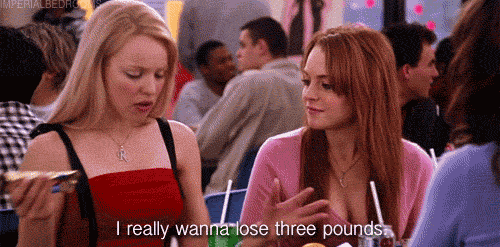After reading The Alchemist one is able to reflect on the journey that life has handed him. In the book Santiago has a dream about a treasure. He keeps his mind focused on going after the treasure. When he does start to lose sight of accomplishing his dream, he has people along the way and omens which guide him.
The first lesson that I learned was that dreams don't go anywhere unless one pursues them. Santiago could have let his dream die, but instead he persevered and took action to try and the treasure.
The second lesson that I learned was that change is good. The merchant never could bring himself to travel or accomplish more because he was afraid of change. It is through embracing change that we become who we are and shape our destiny.
The last lesson that I identified is that the journey itself is the prize. Life is a journey. Santiago never found his physical treasure but he gained insight, and wisdom, a new love, and self-satisfaction through his journey. It led him back home but he had fulfilled his dream through his journey. He had met people and seen things that he would never have seen if he stayed home watching the sheep.
However, Santiago now needs to earn some money in order to get across the great desert that stands between him and the Great Pyramids, where his treasure lies. He finds work at the shop of a crystal merchant. Here he learns Arabic, so that he may converse with the merchant, as well as with the customers. He brings about many improvements to the store, with a creative outflow of ideas that ultimately increases business exponentially for the merchant. Another insight is thus brought to Santiago, that “everybody has a creative potential and from the moment you can express this creative potential, you can start changing the world.” By generating and implementing new ideas in the crystal merchant’s shop, Santiago has brought not only more business, but inspiration to the merchant’s life and thus changed the world in this small yet profound way.
Thoughts:
So I just finished reading The Alchemist by Paulo Coelho, and thought I’d share my thoughts. I’d never heard of the book, or indeed the writer, before receiving the book as a gift a few weeks ago (though I have since come to know that the author is quit prolific), so my opinions of the novel are based solely on the novel, having had no predispositions or biases before reading it. Anyway, lets get to it.
The Alchemist tells the story of a young Andalusian shepherd named Santiago, content in his rambling life until a recurring dream incites in him a longing for adventure. Santiago sells his sheep travels to north Africa in search of treasure and the fulfillment of his destiny.
I have mixed feelings about The Alchemist. As I said, going into the Alchemist I really didn’t know what to expect. The cover blurb sounded intriguing, and the many quotes from critics sampled on the first two pages spoke of a moving novel full of great wisdom and inspiration. Having now finished the book, I will agree that it does contain a good amount of wisdom, and it is inspirational (and on a few occasions actually quite witty), but I’m not sure how I feel about it as a novel.
The actual story of the book is good, and the ending (I won’t spoil it here) was rather more satisfying and surprising than I’d expected. However, the execution of said story, to my tastes at least, feels a bit simplistic and, with the exception of the aforementioned ending, predictable. Santiago’s journey is one of personal discovery, and the lessons he learns about life and happiness and finding your way in the world are all beautiful and uplifting, but they’re hardly new, and to someone such as myself who’s grown up hearing similar “you can do anything you set you mind to” and “follow your dreams/heart/talent/calling/destiny” type messages, Santiago’s ultimate success feels like a foregone conclusion. Indeed, the novel establishes such a feeling of positivity so early on that I could never really doubt in Santiago’s abilities, or find his struggles, while relatable, particularly engaging.
I also don’t quite know what to make of the characters. On the one hand most of them do feel quite vibrant and real, but at the same time they can be somewhat flat. For example, at one point in the novel Santiago meets and subsequently works for a crystal merchant (crystal as in glass, not the pretty shiny stuff what comes outta the ground) who has so many real, understandable human elements, but is used by the author to make a point about giving up on one’s dreams. What makes this particular character’s purpose so clear, I think, is that way it is conveyed. While the narrative or the protagonist could have made subtle or even blatant observations about the merchant to relay this message; instead we have the actual character himself telling us about his failure to realize his dreams, even going so far as to explain why he did so.
Symbolism:http://parojinogalf.blogspot.com/
An Analysis of Mirage Symbolism In The Alchemist Paulo Coelho’s The Alchemist tells the story of Santiago, a young shepherd living in an abandoned church in a small Andalusian town, who is stripped of his comfortable and safe lifestyle after an encounter with Melchizedek, an Islamic king who tells him of his “Personal Legend”. Melchizedek points Santiago in the direction of his treasure only after taking one-tenth of his money, giving him two stones, and a lesson on reading omens.
Throughout his journey, Santiago meets new friends, has everything stolen from him three times, and travels the vast and unknown Sahara Desert all while achieving personal growth and an understanding of his life’s meaning. His journey leads him to an Oasis where he meets the alchemist, a man who will lead him on to the pyramids of Egypt. When Santiago finally completes his journey and arrives at the pyramids, he is beaten by soldiers and ironically told where the treasure is truly hidden: buried beneath a tree at an abandoned church, the exact spot where he had started.
Coelho masterfully works symbolism into The Alchemist to give the reader a direct picture and deeper understanding of his piece. These symbols allow the reader to gain valuable insight into the piece through background knowledge and relations to the symbol itself. One example of symbolism in The Alchemist is mirages, or hallucinations. This symbol is not used in the way a typical reader would think. Instead of meaning a picture that one sees in the extreme heat, it is used to represent a vision or aspiration.
Although the term mirage is mentioned only once in the novel, it is symbolized throughout by Santiago’s struggle to obtain his treasure. His hardships in traveling give the reader a sense that the treasure itself may be a mirage, something Santiago is only dreaming of but may never physically reach. Coelho uses two separate meanings of the word mirage. The literal definition word mirage is used the one time that it is mentioned and is understood to mean a vision. Santiago is watching hawks flying through the sky when an adverse move by one bird causes him to see a sign.
Suddenly, one of the hawks made a flashing dive through the sky, attacking the other. As it did so, a sudden, fleeting image came to the boy: an army, with its swords at the ready, riding into the oasis. The vision vanished immediately, but it had shaken him. He had heard people speak of mirages, and had already seen some himself: they were desires that, because of their intensity, materialized over the sands of the desert. But he certainly didn’t desire that an army invade the oasis. At this point in the novel, Coelho is using mirage in the literal sense of a vision seen in the desert.
Although Santiago sees it is a sign of the future and acts on this thought, the meaning of the word in this sense remains the same. Coelho also inadvertently compares Santiago’s entire journey as a mirage in itself. There are many times throughout the plot where it seems Santiago has almost reached his treasure or has made progress only to find a block in the road or a digression he must make. Although the reader may not make the connection during the first read, it is evident that the story line mirrors that of a mirage as Santiago seems physically unable to reach his treasure with ease.
The first instance of such struggle comes early in his journey. Santiago sold his sheep and was traveling through Tangier when he stopped in a bar. There he meets and strange man who, for the right price, offers to take him to the pyramids claiming they “could get to the Pyramids by tomorrow”. Santiago allows himself to trust this man and lets him hold his money, the entirety of his possessions. The man leads Santiago through the plaza, a maze of people, vendors, and animals and, eventually, Santiago loses the stranger and all his money. This is the first time Santiago’s Personal Legend could be perceived as a mirage.
Like a hallucination to a thirsty and tired desert traveler, this event gave Santiago happiness and hope only to leave him without his proverbial water and shelter. After being promised a guide to the pyramids and a short travel period he was instead left alone and without money. What had minutes beforehand seemed like a perfect way to his treasure was now only an empty promise. Soon after, Santiago is forced to work for a crystal merchant in the hopes of replacing his lost money and continuing on his quest. He works for the merchant for eleven months and during this time, continues to think less and ess of his Personal Legend. He becomes skilled in this practice and begins to work towards instead, replacing his flock of sheep and returning to his past lifestyle. During this time, Santiago perceived reaching the pyramids as an impossible feat claiming “Egypt was now just a distant dream for him” and that, like a mirage, it would always be just out of his reach. In this way, Coelho shows that Santiago’s morale is lessening. The more that he stays at the crystal shop, the more he sees his treasure as a mirage instead of a physical object.
Not only can the boy’s journey be related to mirages, so to can his relationship with Fatima. He first meets her at the oasis by the water well. They next day he returns and tells her that he loves her. From there he begins to tell her of his life as a shepherd and his search for treasure. Fatima listens patiently for a month and then finally tells Santiago her true feelings for him. She explains that she is a woman of the desert and that, since she is a woman of the desert, she is used to watching husbands leave. She explains how she is glad to let him go and wish for his safety until he returns, as it is something his must do.
Santiago heeds her advice and continues on his journey, always thinking back to Fatima and the oasis, yearning to be with her. Coelho once again presents an event that can be compared to a mirage in this relationship. Santiago finally finds the woman he claims to love and just as he is getting close to her, she sends him off, away from what he desires. Santiago uses this relationship that is at the tip of his fingers as motivation to reach the end of his Personal Legend and return to Fatima with the treasure he has been searching for.
Perhaps the largest and most prominent example of and event relating to a mirage would be when Santiago finally reaches the pyramids. After the hardships he encounters along his way, which include being stolen from twice, being stuck in the midst of a war, and having to turn himself into the wind, he finally reaches Egypt where his treasure is fated to be held. He praises God for leading him along his Personal Legend and begins to dig when he is approached by several men who command him to keep digging, as they were to take his gold.
When Santiago found nothing in the ground, the men beat him and stopped only after he explained that he was led there by a dream. The soldiers leave but not before the leader explains a recurrent dream that he had. He told Santiago that his dream instructed him to “travel to the fields of Spain and look for a ruined church where shepherds and their sheep slept. In my dream, there was a sycamore growing out of the ruins of the sacristy, and I was told that, if I dug at the roots of the sycamore, I would find a hidden treasure”.
This perhaps is the most ironic part of the story, as well as the most relevant to the mirage symbolism that is prevalent throughout the story line. Through the entirety of his journey, he is told that his treasure lies at the pyramids. He struggles to cross the desert and find his way there. When he finally reaches the place that seemed almost impossible to find, he is beaten and told through another person’s vision that his treasure lays in the fields of Andalusia, the exact spot where he started. It seemed that he was so close to his treasure, just one grain of sand away when suddenly he is told how far he truly is from obtaining it.
This mirage reference gives the reader a sense of humor and knowledge that, the whole journey was made up for the purpose of personal growth. It gives the reader the sense that, while Santiago had always been right on top of the treasure and never knew, the journey and spiritual and personal growth was the real treasure Santiago obtained. When Santiago finally finds his treasure from the same tree he had previously slept under, the reader is given a final sense of relief that he has finally found the item that had always been just out of reach.
Coelho uses these examples of symbolism and more to create an overlying relation of Santiago’s journey to that of a mirage. While this is not a traditional style in which a symbol is used and may not be noticed by a reader their first time reading the book, it is a prevalent relation that adds depth and character to the book. Even though the word mirage is only mentioned one time, a reader will be able to connect Santiago’s struggle in traveling and in his interpersonal communications as a relation to mirages. Without this relation, an element of the novel’s plot would be lost and readers would have nothing to compare his struggles to.
Not only does the mirage relation give the reader a physical image to compare with his quest, it also ties the journey back to the setting, the Sahara Desert. This adds yet another layer to the story line that previously claimed everything is connected by the “Soul of the World”. Coelho masterfully works this overlaying symbol into his novel to add depth and character to a story and to give the reader an overall moral; to never give up on your dream, even when it seems as if it will always be physically unattainable.
This moral is illustrated by Santiago’s determination in finding his treasure and returning to Fatima at the oasis, even when so much had already gone wrong on his quest. It describes how, if a person maintains their intended path and listens to their heart, they will have treasure beyond their dreams, find personal and spiritual growth, and be truly happy. Work Cited Coelho, Paulo. The Alchemist. New York: HarperOne, 1998. Print.




































